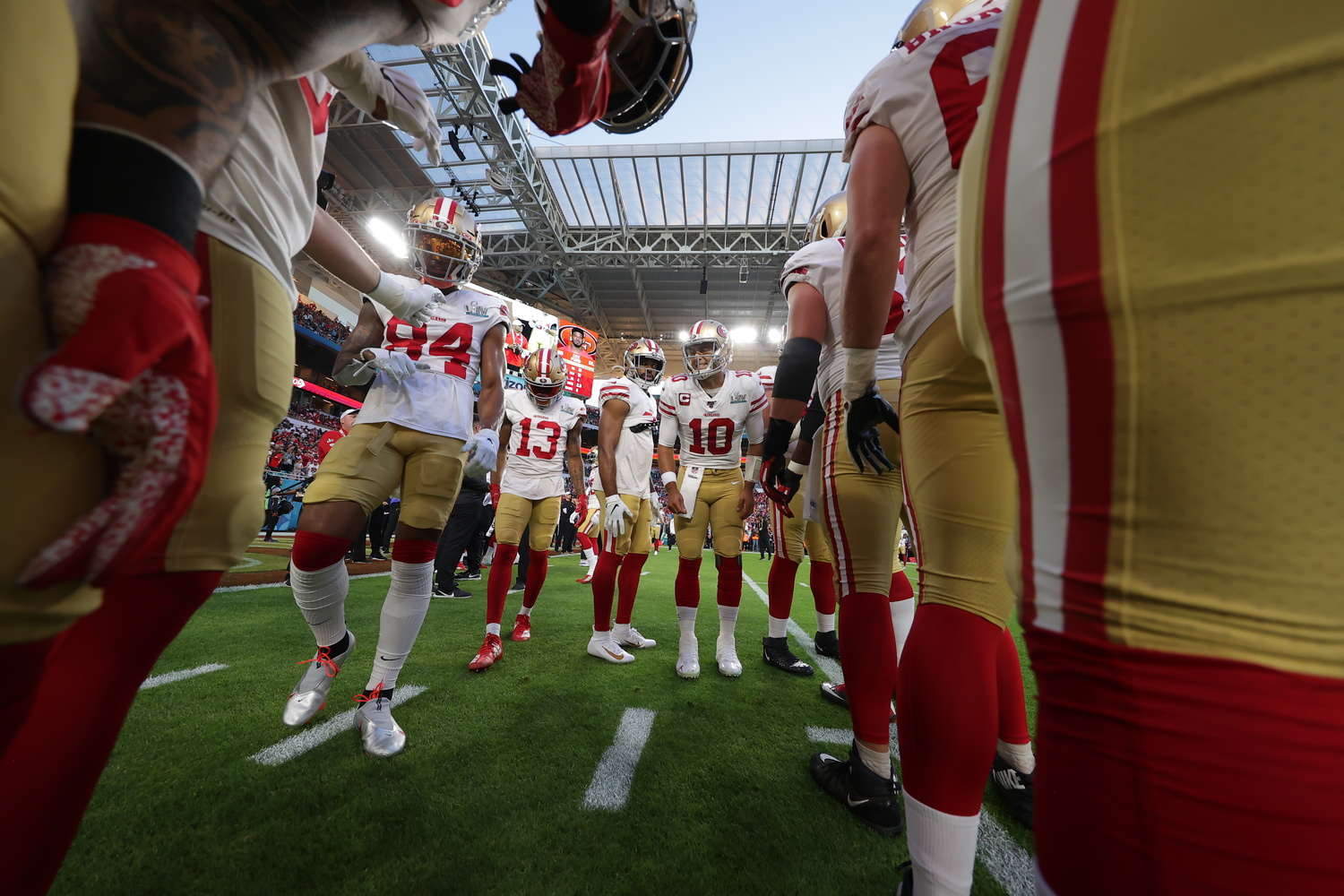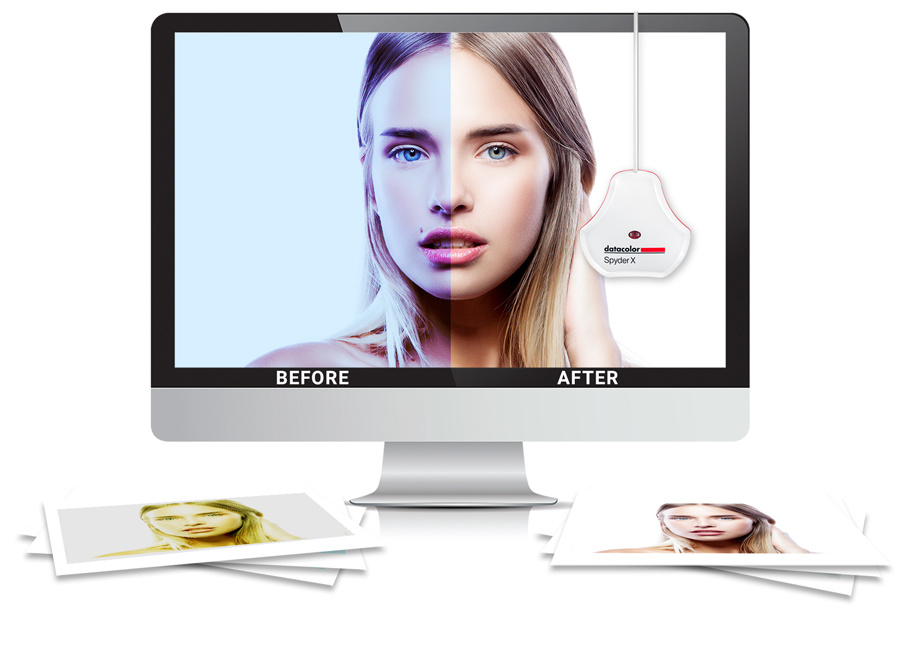We've teamed up with 49ers photographer Terrell Lloyd and Datacolor to talk about Lloyd's prolific career as a sports photographer and the importance of accurate colors in sports and action images.
Color is a funny thing; it's so important to us photographers and we swoon over color grades, complementary colors, palettes, tones, and so on. But calibrating our monitors to ensure we get perfectly accurate colors in our images and prints is decidedly unsexy. I first got serious about calibrating my monitors with an early Datacolor Spyder when I took a portrait of an actress, long before I had dreamed of making a career out of my photography. I loved the image (though it wasn't good in retrospect) and I edited it very carefully. I published the image and I started getting comments about how the model looked like a zombie. Outraged, I opened the image on my phone and noticed that my shot had a green color cast to it thanks to an old monitor and no calibration.
That sort of story is a common one; portraits and product photography is the bread and butter of monitor calibration. But, it's not just there it matters. Some years later I ended up photographing a motorsport event. I'm a petrol-head so it wasn't to make money per se, but I did hope to sell some prints to drivers. Once I published my images, along with lots of other photographers there that day, I noticed that well over half of the images from other 'togs had inaccurate colors. The cherry red Porsche looked an off-pink, the British racing green Jaguar E-Type looked more emerald, and so on. I sold a print to nearly every driver from that event. Was it because I was the best photographer? No, I wouldn't say so. It's because my images were perfectly accurate that put me ahead of my colleagues that day. The liveries of these cars were very carefully designed and produced.

© Terrell Lloyd and used with permission.
That importance of color accuracy permeates all sports and action photography. Not only do correct colors simply look better and more professional, but to a great many people behind the scenes of sports, it's crucial. That's why NFL and 49ers team photographer Terrell Lloyd takes it seriously.
Terrell Lloyd

© Terrell Lloyd and used with permission.
Terrell Lloyd originally worked in tech, but with a love for photography. After shooting a few weddings for friends, and then some corporate events, he began taking his camera and a long lens to San Francisco 49ers games as a season ticket holder. This lead to getting an occasional pitch-side pass, then permanent credentials, and now he's a leading sports photographer with other photographers working under him. Over his 27-year career as professional, Lloyd has photographed tennis competitions, MLB Baseball, the NBA, PGA Golf, and of course, the NFL Super Bowl, including earlier this month where his team met the Kansas City Chiefs (we won't discuss the score.)
Sports photography is difficult on so many fronts; the pace, the ever-changing light, the lack of control, and so on. For Lloyd, he puts a lot of weight on being able to anticipate what's going to happen and being prepared to get the shot. Lloyd said "Is it a running play? A pass play? A quarterback sneak? That takes time and a lot of practice to become proficient at, but it’s like any craft — you learn by practice, practice, practice."
Preparation for Lloyd doesn't stop at the action, though. On a game day he shoots with five cameras and nine lenses to cover all bases; crowd, sideline, huddles, details, action, etc. Not to mention he's also shooting for a lot of different purposes, not just sports photojournalism. His images are often used for everything from marketing to community relations and all that lies in between. Fear not though, we have a gear list! For bodies, he's always using Canon flagship cameras and has done so since 1996. His lens list is a veritable feast:

© Terrell Lloyd and used with permission.
You can tell from Lloyd's words that post-production isn't something he puts much focus on with regards to creativity. The shot has to be right in-camera. This is common for sports photographers with many having runners sending images to news outlets while the event is still happening! However, calibrating a monitor is crucial to him.
With experience comes a kind of inherent understanding of your camera and how it responds. I know the nuances between what I see on my camera and how it will look on my display screen, but that’s still no substitute for color calibrating my monitors for precise color accuracy. This is especially critical when I do a lot of printing, like when I’m doing a gallery show. “Close” doesn’t cut it – it needs to be dead-on color accurate.

For calibrating his monitor to ensure the "dead-on" accuracy of his color, it should come as no surprise that he uses Datacolor. Not least because this article is a three-way union between us, Lloyd, and Datacolor. But, also because Datacolor has consistently been top of their field for many years and are trusted by people top in their respective fields too. Yes, as you can see by the label at the top, this is a sponsored post, but there's no conflict or cognitive dissonance for me. I've been using a Datacolor Spyder for over a decade and long before I'd ever spoken to the company. No more zombies in my work, thanks.

If you're interested in achieving accurate colors in your photographs, now through March 1st, 2020, Datacolor is having an enticing sale. Don't miss out! The SpyderX Pro has savings of $40 ($129.99 down from $169.99) and the SpyderX Elite has savings of $70 ($199.99 down from $269.99.) There's also $100 savings on Capture Pro and Studio packages which also come with camera and lens calibration.

© Terrell Lloyd and used with permission.
You can see more work from Terrell Lloyd on his website, Twitter, or Instagram.
All images © Terrell Lloyd and used with permission.
















Nicely done.
They are really reaching without that before and after example.
So more of a commercial write-up for datacolor instead of an actual story on Terrell, just sad Fstoppers.